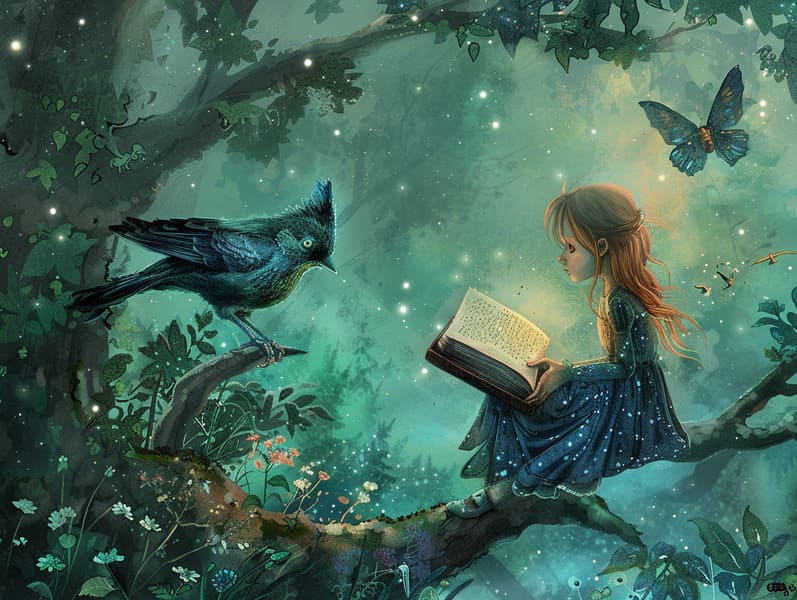The Story Behind Old Fairy Tales with Their Unchanging Beauty.
The Story Behind Old Fairy Tales with Their Unchanging Beauty.
Blog Article

Classic fairy tales have deep roots. These stories have been shared from one generation to the next millennia before they were ever documented. They sprang from a variety of traditions, including African traditions. They were initially conveyed among adults, often carrying themes and messages relevant to the societal norms and beliefs of the time.
The Brothers Grimm, the two Grimm brothers, were among the first to assemble many of these beloved stories. Their volume, "Grimm's Fables," included tales like "The True Bride," "Little Brother and Little Sister," and "The True Story of Snow White," which have since become staples in the world of classic fairy tales. Similarly, H. C. Andersen's fanciful tales, such as "The Little Mermaid," and "The Ugly Duckling," have gained the love worldwide, guaranteeing their place in the pantheon of beloved fairy tales.
Despite their age, classic fairy tales remain as impactful as ever, especially as nighttime stories for kids. These enchanting tales are now available in many formats, including richly illustrated books, magical animations, and online fairy tales.
Their continued relevance can be connected to several fascinating points:
Life Lessons: Classic fairy tales often impart important moral lessons. Fairy tales like "The Wolf and the Liar" teach the merit of integrity, while "The Tortoise and the Hare" show the traits of perseverance and modesty. These tales offer young ones clear distinctions between good and bad, helping to shape their moral compass in a tender yet impactful way.
Compassion and Insight: Traditional fairy tales frequently include individuals facing challenges and struggles, motivating young listeners to connect with their struggles and boost their triumphs. For instance, "The Story of Beauty and the Beast" points out the virtue of looking beyond appearances to comprehend the inner being of a soul, cultivating tenderness and recognition.
Cultural Perception: Many fairy tales are infused with the cultural contexts from which they grew. Delving into these fairy tales can provide intriguing perspectives into different historical contexts, building a sense of global respect and understanding.
Creativity and Fantasy: The magical elements in classic fairy tales—wizardry and magic—engender children’s imaginations. These fairy tales move readers to mythical realms, inspiring inventive ideas and a sense of curiosity that endures a lifetime.
Classic fairy tales are not only charming but also illuminating. They serve as enchanted tools in fostering various intellectual and emotional capacities in children. When ancient fairy tales are spoken out loud, they develop speaking abilities by presenting new vocabulary and sophisticated sentence structures. This practice also enhances hearing famous fairy tales for children abilities and concentration, as young readers stay focused, anticipating to see what happens next.
Furthermore, contemplating the themes and characters of old fairy tales can develop thinking skills and logical thinking. Kids are educated to pinpoint patterns, make predictions, and catch on to cause and effect. These discussions also assist children articulate their thoughts and feelings, fostering their emotional intelligence.
In today’s technological era, the proliferation of online fairy tales has made these stories more accessible than ever. Websites and programs extend extensive collections of bedtime fairy tales that can be explored or listened on anytime, anywhere. Fairy tales narrated are particularly popular, extending an engaging way for children to relish these charming stories. Sound books and read-out-loud stories transport characters and settings to life, often paired with whimsical melodies and tunes that enhance the tale experience.
The persistent attraction of timeless fairy tales lies in their ability to shift to modern times while keeping hold of their main lessons. Contemporary updates of these fairy tales often include more representative figures and modern settings, making them meaningful to today’s audience. However, the basic principles of guts, understanding, and justness remain unchanged, continuing to resonate with kids of all ages.
Classic fairy tales also offer a sense of coziness and knownness. They afford a organized narrative with a evident beginning, middle, and end, often concluding with the wrap-up of conflicts and the triumph of virtue over wickedness. This certainty can be reassuring for children, allowing a sense of sturdiness in an shifting world.
Classic fairy tales continue to charm and train new generations, maintaining their fascination and value in modern society. As kids' bedtime tales, they present a perfect blend of magic and knowledge, backing moral values, empathy, and creativity. The prevalence of online fairy tales and the commonness of fairy tales told out loud affirm that these old narratives remain accessible to new generations.
By continuing and circulating these tales, we continue to pay tribute to the rich tapestry of narrative artistry and cultural heritage. Whether you are seeing a colorful picture book, viewing a web-based library, or listening on an read-aloud book, the delight of bedtime fairy tales is always within reach. These tales show us of the unfading ability of fairy tales and its ability to bind us across eras and regions.
Whether you are viewing a gorgeously illustrated book, accessing a cyber library, or playing an voice book, the magic of old fairy tales is always within reach.
These tales demonstrate of the unceasing ability of narratives and its ability to unite us across eras and regions, establishing a link that enchants and educates alike.